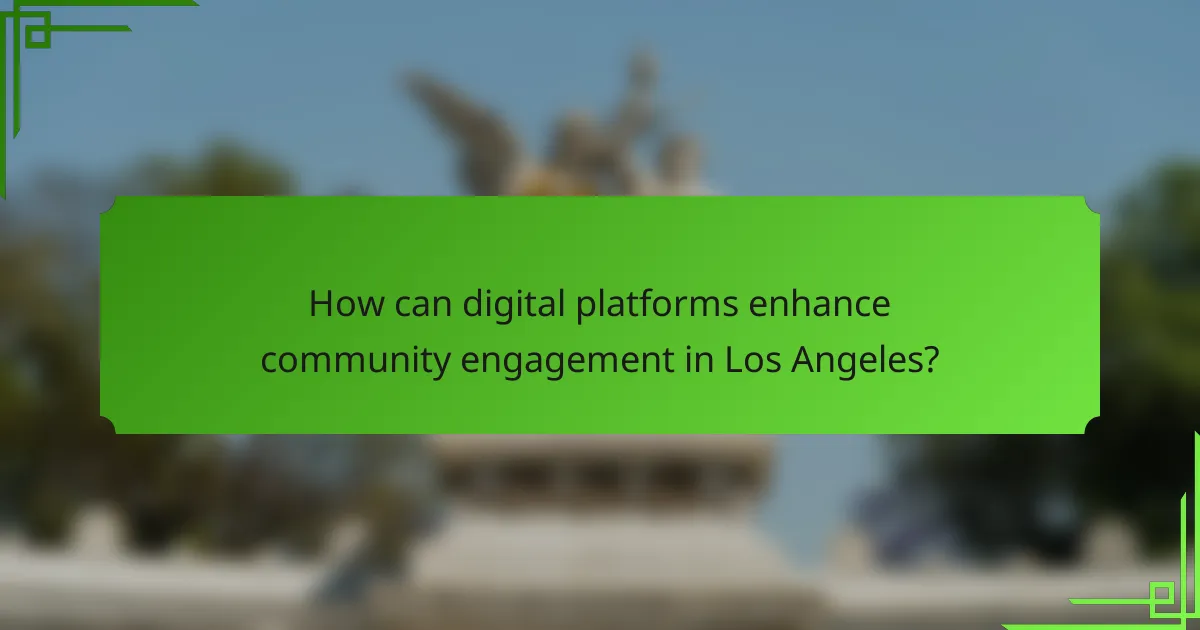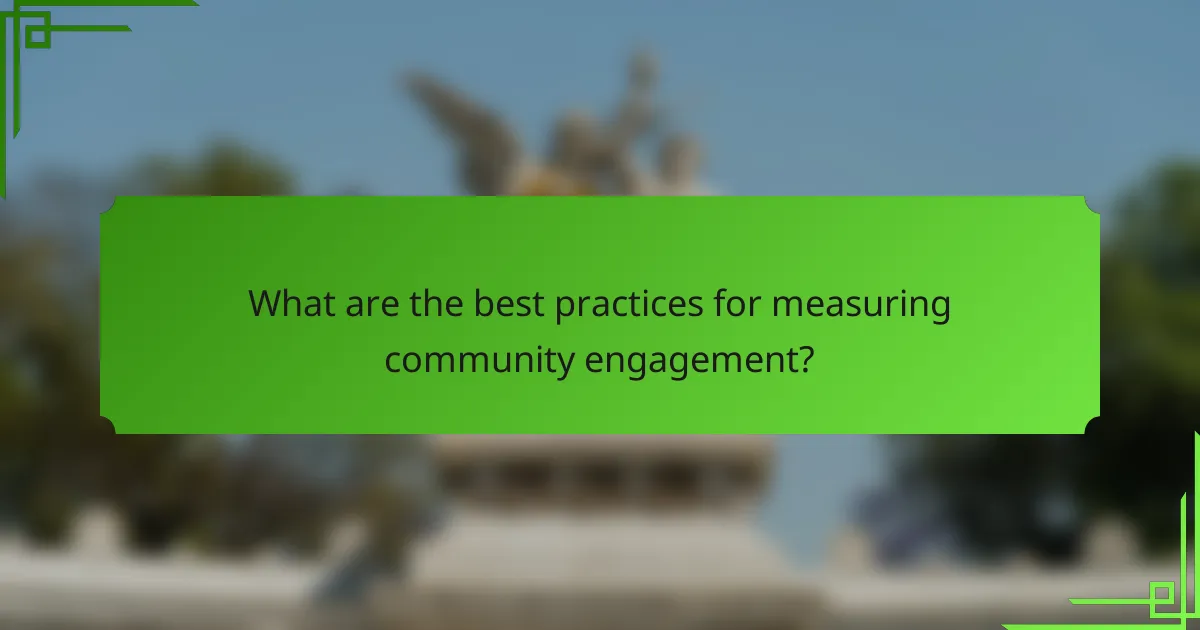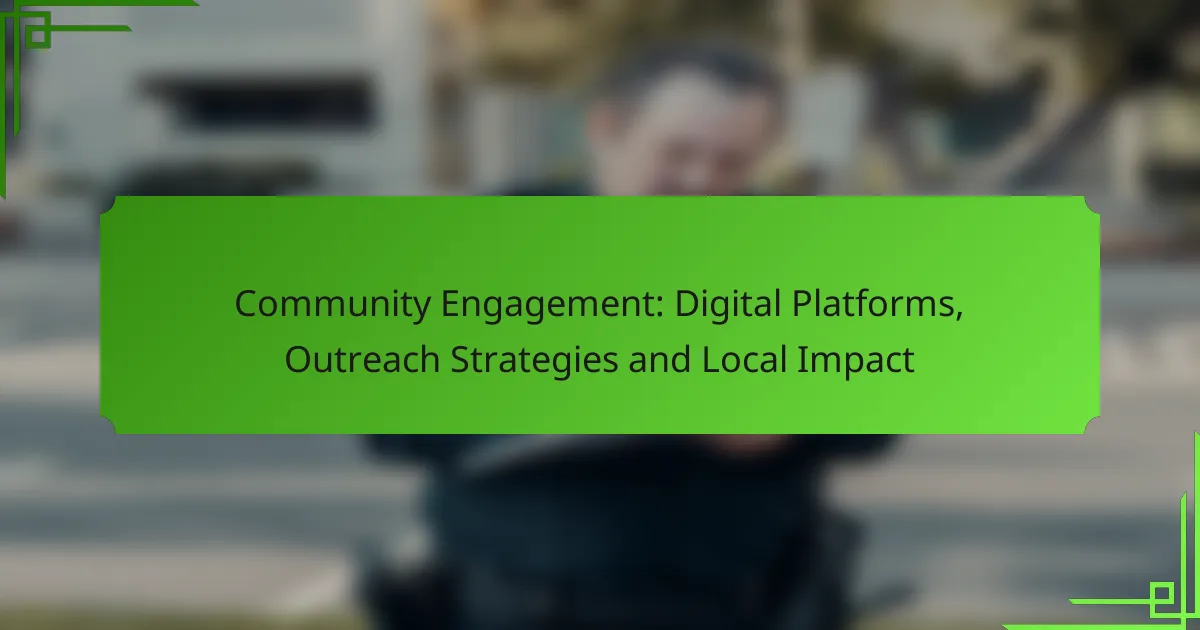Digital platforms play a crucial role in enhancing community engagement by enabling effective communication and collaboration among residents and local organizations. Through targeted outreach strategies and active participation initiatives, these tools foster a sense of belonging and empower individuals to contribute to their neighborhoods. Ultimately, such engagement leads to stronger social networks and a more vibrant local economy.

How can digital platforms enhance community engagement in Los Angeles?
Digital platforms can significantly enhance community engagement in Los Angeles by facilitating communication, fostering collaboration, and promoting local events. These tools allow residents to connect with each other and local organizations, making it easier to share information and participate in community activities.
Social media outreach
Social media platforms like Facebook, Twitter, and Instagram are vital for outreach in Los Angeles. They enable organizations to share updates, gather feedback, and mobilize community members quickly. Engaging content, such as videos and polls, can increase interaction and awareness.
To maximize impact, consider using targeted ads to reach specific demographics within the city. Regularly updating content and responding to comments can also enhance community trust and participation.
Online community forums
Online community forums provide a space for residents to discuss local issues, share resources, and connect with one another. Platforms like Nextdoor or local Reddit threads can serve as valuable tools for fostering dialogue among neighbors.
Encourage participation by posing questions or starting discussions on relevant topics. Moderation is key to maintaining a respectful environment and ensuring that all voices are heard.
Local event promotion
Promoting local events through digital platforms can significantly boost attendance and community involvement. Websites like Eventbrite or Facebook Events allow organizers to create and share event pages easily.
Utilize eye-catching visuals and clear descriptions to attract interest. Collaborating with local influencers to spread the word can further enhance visibility and encourage participation.
Collaborative platforms
Collaborative platforms, such as Google Docs or Trello, enable community members to work together on projects and initiatives. These tools facilitate transparency and collective decision-making, making it easier for residents to contribute their ideas and skills.
Establish clear roles and timelines to keep projects on track. Regular check-ins can help maintain momentum and ensure that everyone is engaged in the process.
Virtual town halls
Virtual town halls allow community leaders to connect with residents in real-time, fostering open dialogue and transparency. Platforms like Zoom or Microsoft Teams can host these events, making it accessible for a wider audience.
Promote these events in advance and provide opportunities for residents to submit questions beforehand. Recording sessions can also help reach those who cannot attend live, ensuring that more community members stay informed and involved.

What outreach strategies are effective for community engagement?
Effective outreach strategies for community engagement include targeted messaging, partnerships with local organizations, volunteer engagement programs, and surveys to gather feedback. These approaches help build connections and foster active participation within the community.
Targeted messaging
Targeted messaging involves crafting communication that resonates with specific segments of the community. This can be achieved by using data to understand the demographics, interests, and needs of different groups, allowing for personalized outreach.
For example, a local health initiative might tailor messages about wellness programs to young families, while promoting mental health resources to seniors. Utilizing social media platforms can enhance the reach of these messages, ensuring they land in the right hands.
Partnerships with local organizations
Building partnerships with local organizations can amplify outreach efforts and enhance credibility. Collaborating with schools, non-profits, and businesses allows for resource sharing and access to established networks.
For instance, a community garden project could partner with a local environmental group to host workshops, attracting more participants and fostering a sense of ownership among residents. These alliances can also lead to joint funding opportunities for community initiatives.
Volunteer engagement programs
Volunteer engagement programs are crucial for mobilizing community members and fostering a sense of belonging. These programs can include training sessions, community service events, and recognition initiatives to motivate participation.
For example, a city might organize a monthly clean-up day, offering volunteers a chance to contribute while building camaraderie. Providing incentives, such as certificates or local discounts, can further encourage involvement and retention.
Surveys and feedback mechanisms
Surveys and feedback mechanisms are essential for understanding community needs and measuring the impact of outreach strategies. Regularly soliciting input through online surveys or community forums helps identify areas for improvement and adjust programs accordingly.
For effective feedback, ensure surveys are concise and accessible, possibly offering incentives for completion. Analyzing this data can guide future initiatives and demonstrate responsiveness to community concerns, strengthening trust and engagement.

How does community engagement impact local neighborhoods?
Community engagement significantly enhances local neighborhoods by fostering collaboration among residents, local organizations, and government entities. This interaction leads to improved services, stronger social networks, and a more vibrant local economy.
Increased civic participation
Increased civic participation occurs when community members actively engage in local decision-making processes. This can include attending town hall meetings, participating in local elections, or joining community boards. Higher participation rates often lead to policies that better reflect the needs and desires of residents.
To encourage civic involvement, communities can utilize digital platforms for outreach, such as social media and community forums. These tools make it easier for residents to stay informed and contribute their voices to local issues.
Improved local services
Improved local services arise when community engagement allows residents to communicate their needs directly to service providers. This feedback loop helps local governments and organizations prioritize resources effectively, ensuring that services such as waste management, public transportation, and emergency services meet community expectations.
For example, neighborhoods that actively engage with local authorities may see quicker responses to service complaints or requests for new amenities. Regular surveys and community meetings can facilitate this dialogue, leading to more tailored and efficient services.
Stronger community ties
Stronger community ties develop when residents collaborate on projects and initiatives, fostering a sense of belonging and mutual support. Engaging in local events, volunteer opportunities, or neighborhood improvement projects can build relationships among residents, creating a more cohesive community.
Communities can enhance these ties by organizing social events or workshops that encourage interaction. Simple initiatives like neighborhood clean-up days or potluck dinners can significantly strengthen bonds among residents.
Enhanced local economy
Enhanced local economies result from community engagement that supports local businesses and initiatives. When residents prioritize shopping at local stores or participating in community-supported agriculture, they contribute to the economic vitality of their neighborhoods.
To boost the local economy, communities can promote “shop local” campaigns or host markets that feature local artisans and producers. These efforts not only support local entrepreneurs but also keep money circulating within the community, benefiting everyone involved.

What are the best practices for measuring community engagement?
Effective measurement of community engagement involves tracking specific metrics and gathering feedback to assess participation and satisfaction. Best practices include utilizing quantitative data from various platforms and qualitative insights from community members to create a comprehensive understanding of engagement levels.
Engagement metrics analysis
Engagement metrics analysis focuses on quantitative data to evaluate how community members interact with digital platforms. Key metrics include likes, shares, comments, and participation rates in events or discussions. Regularly reviewing these metrics can help identify trends and areas for improvement.
Consider using tools like Google Analytics or social media insights to track these metrics. For example, a community group may find that posts with images receive 50% more engagement than text-only posts, guiding future content strategies.
Community feedback surveys
Community feedback surveys are essential for gathering qualitative insights directly from members. These surveys can include questions about satisfaction, suggestions for improvement, and overall community sentiment. Aim for a response rate of at least 20-30% to ensure the feedback is representative.
When designing surveys, keep questions clear and concise. Use a mix of rating scales and open-ended questions to capture both quantitative and qualitative data. For instance, asking members to rate their experience on a scale from 1 to 5, followed by an open question for comments, can provide valuable insights into community engagement levels.
